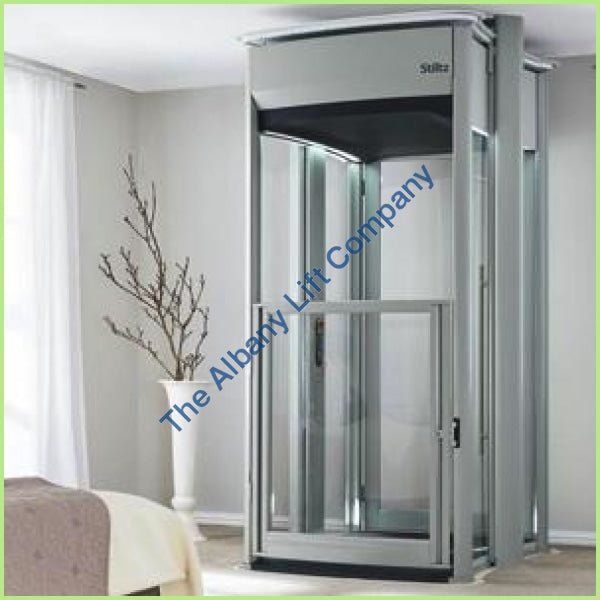Leading Lift Companies in London: Supplying Exceptional Solution and Assistance
Wiki Article
Exploring the Globe of Elevators: Typical Concerns Dealt With by Different Lift Systems
As we browse through the upright transportation systems of modern buildings, elevators stand out as a crucial element of our daily lives. Nevertheless, behind their smooth operation exists a globe of intricate systems that can often run into obstacles. From hydraulic lifts to traction systems and machine-room-less layouts, each lift type includes its collection of typical concerns. Recognizing these obstacles is important for making certain the smooth functioning of these important systems. Let's explore the intricacies that underlie the operation of elevators and the possible issues that can occur, dropping light on the intricate web of lift devices.Hydraulic Lifts
Hydraulic lifts, often preferred for low-rise structures, utilize fluid pressure to manage the movement of the elevator car (lift repair companies). This system entails a hydraulic pump pushing oil right into a cylinder, creating the lift to relocate the preferred direction. While hydraulic lifts are known for their smooth and quiet operation, they do feature their very own set of common problemsOne widespread issue with hydraulic lifts is oil leakage. Furthermore, concerns with the control system, such as defective valves or a malfunctioning pump, can cause disruptions in the elevator's movement.
Regular upkeep and prompt repairs are necessary to ensure the smooth functioning of hydraulic elevators. By attending to these common problems proactively, building owners can decrease downtime and ensure the safety and efficiency of their upright transport system.
Traction Elevators
When considering vertical transport systems in structures, another usual kind other than hydraulic lifts is the traction lift. Grip elevators operate utilizing a system of ropes and counterweights that relocate the elevator car by grasping onto the hoist ropes. This system enables smoother and quicker vertical transportation compared to hydraulic systems.Among the common issues dealt with by traction elevators is rope wear. The continuous activity of the ropes within the traction system can cause tear and wear over time, potentially triggering the elevator to malfunction or become hazardous for usage. Regular assessments and upkeep of the ropes are vital to make certain the lift's correct performance and safety.
One more concern that grip lifts may encounter is connected to the control system. Issues with the control system can result in problems such as unpredictable movement, hold-ups in feedback times, and even complete shutdowns. Regular testing and upkeep of the control system are essential to avoid such issues and make sure the lift's reliability.
Machine-Room-Less (MRL) Lifts

One of the crucial components of MRL lifts is the small gearless traction equipment that is mounted within the hoistway. This device efficiently drives the elevator automobile without the need for large equipment found in traditional grip elevators. Furthermore, MRL elevators generally utilize a weight system to stabilize the car, more boosting their energy effectiveness.
Regardless of their advantages, MRL elevators might encounter obstacles connected to repair and maintenance as a result of the confined area for equipment setup. Access for servicing components within the shaft can be limited, calling for specialized training for professionals. Appropriate upkeep schedules and normal assessments are essential to make sure the ongoing smooth procedure of MRL elevators.
Overloading and Weight Limitation Issues
Are lifts outfitted to manage excess weight tons successfully and safely? Overloading and weight limitation problems are crucial issues in lift operations. Lift suppliers style raises with particular weight capabilities to ensure passenger safety and tools longevity. Surpassing these weight restrictions can bring about numerous problems, consisting of mechanical failings, delays, and safety and security threats.When elevators are overwhelmed, it puts too much pressure on the motor, cables, and other parts, possibly creating malfunctions or break downs. Safety and security systems such as sensing units and overload sensors remain in area to stop lifts from moving if they discover excess weight. Furthermore, surpassing weight restrictions can lead to boosted power consumption and wear and tear on the lift system.
To minimize straining issues, constructing supervisors need to prominently present weight limitations in lifts and educate residents on the relevance of adhering to these limitations - lift repair companies. Normal upkeep checks by certified technicians can also aid guarantee that lifts are operating within safe weight specifications. By dealing with overloading and weight limitation concerns proactively, building proprietors can enhance elevator safety and effectiveness
Electrical System Failings
Surpassing weight limits in elevators can not just result in mechanical problems however also potentially contribute to electrical system failures within the lift framework. Electrical system failings are an essential worry in lift procedure, as they can trigger unexpected shutdowns, breakdowns, or perhaps safety hazards. One typical electric problem is the getting too hot of components as a result of extreme existing circulation triggered by straining the lift beyond its we maintain lifts capability. This can result in harm to the wiring, motor, or control systems, causing pricey repair work and downtime.Regular upkeep and evaluations are vital to identify and address potential electric concerns quickly, guaranteeing the effective and secure procedure of elevator systems. By adhering to weight restrictions and conducting regular electrical system checks, structure owners can reduce the risk of electrical failures in elevators.
Final Thought

Hydraulic elevators, usually liked for low-rise structures, use fluid pressure to regulate the movement of the lift cars and truck.When considering vertical transportation systems in buildings, another common kind aside from hydraulic elevators is the traction elevator. Grip lifts run utilizing a system of ropes and weights that relocate the elevator automobile by clutching onto the hoist ropes. Unlike standard elevators that need a separate maker space to house the devices, MRL lifts incorporate most of the elements within the shaft, eliminating the need for a specialized machine room.In verdict, lifts encounter usual issues such as hydraulic breakdowns, traction system failings, and electric system problems.
Report this wiki page